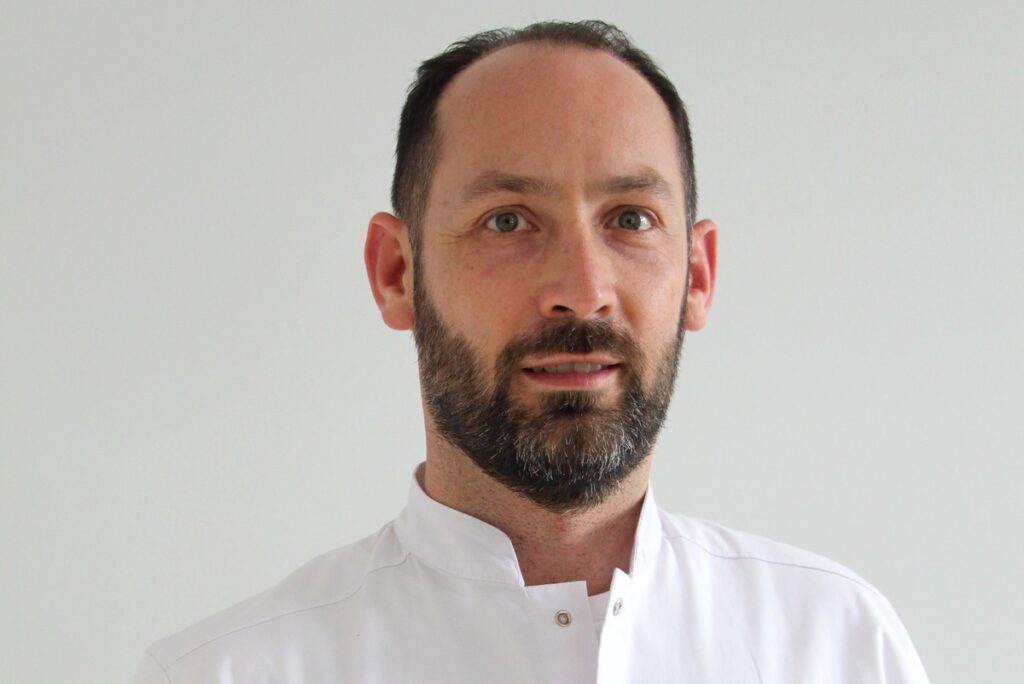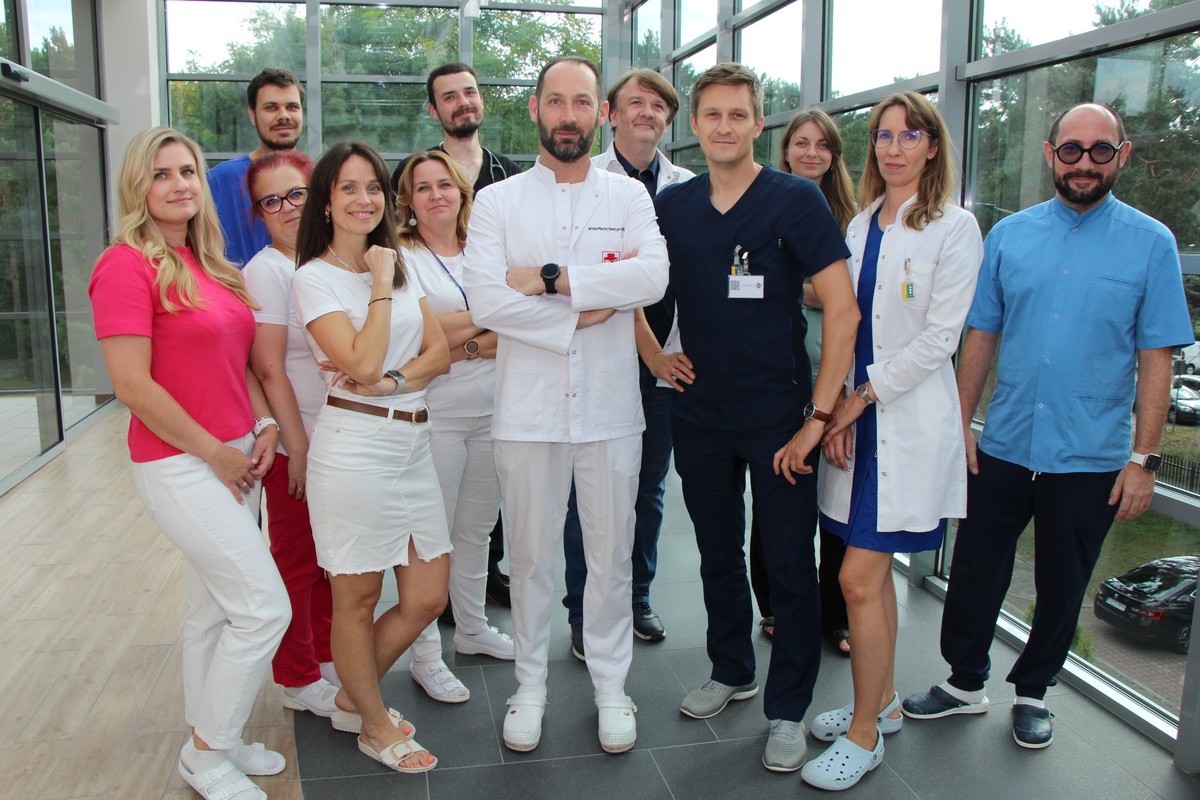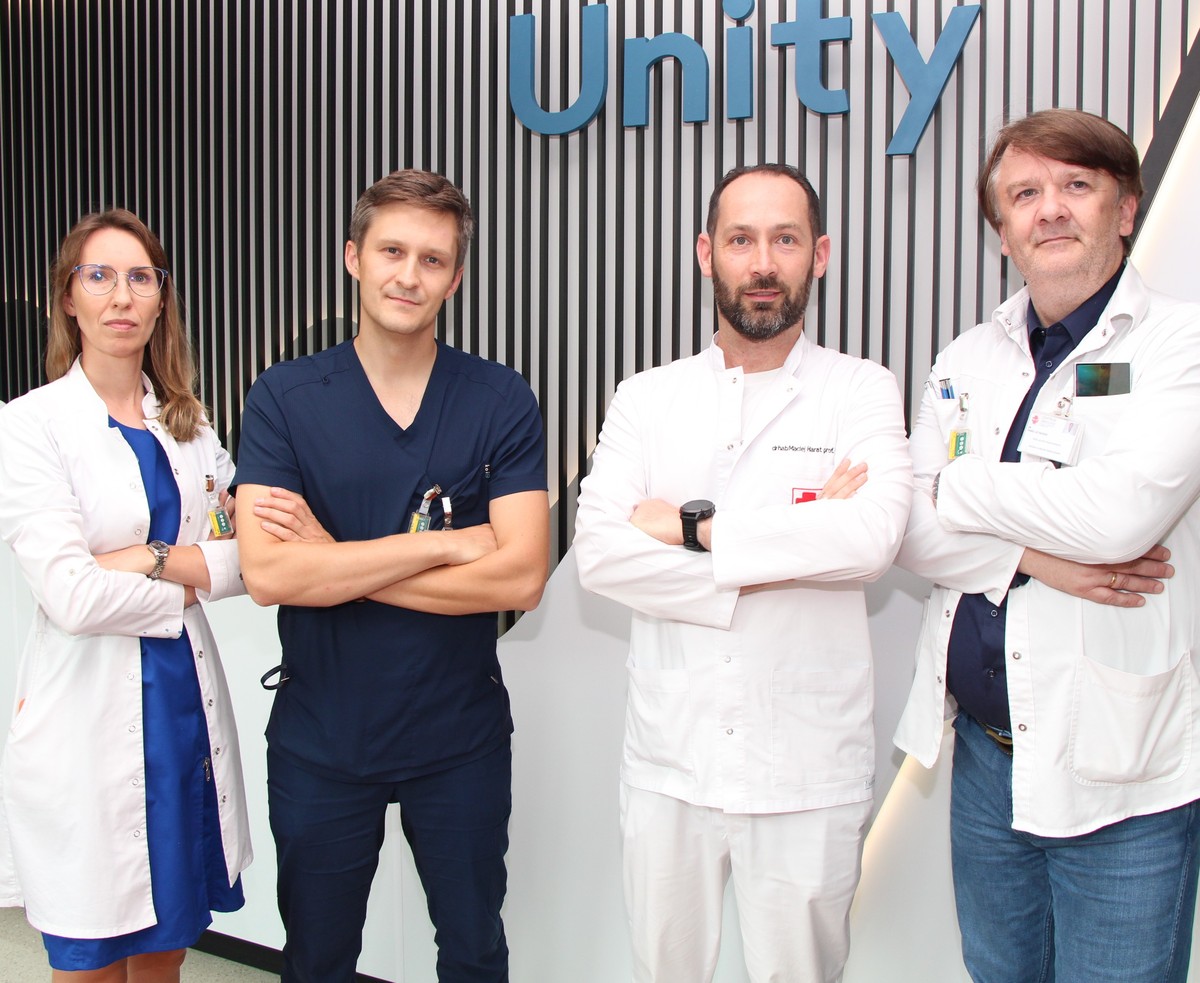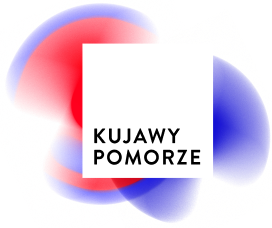
Hope for Oncology Patients
An interview with Prof. Maciej Harat, coordinator of the Department of Neuro-Oncology and Radiosurgery as well as the Radiotherapy Ward at the Oncology Centre in Bydgoszcz, where in a few months recruitment will begin for an experimental clinical trial for patients with recurrent glioblastoma multiforme. The study will be funded by a grant from the state Medical Research Agency. Prof. Maciej Harat is the laureate of the 2024 Marshal of the Region Award in the field of healthcare.
For years you have been treating central nervous system tumors. Improving the effectiveness of glioblastoma treatment is also the focus of your scientific research. Is the Medical Research Agency grant the fulfillment of a doctor’s and scientist’s dream?
It is a great joy – firstly because we now have a real chance to improve the lives of patients who currently have very limited treatment options. Secondly, it is recognition of the hard work of my team and the management of the Oncology Centre, who helped bring the project to perfection. But right afterwards came a sense of responsibility – now we have to implement everything effectively and flawlessly. It is a huge challenge.
74 million zlotys is the largest scientific grant in this competition. What exactly does this amount cover?
We have received funding for a clinical trial on the treatment of recurrent glioblastoma multiforme, which is one of the most common central nervous system tumors. It is a very difficult adversary with which medicine is still fighting an uneven battle. These studies are particularly important because currently, with this type of cancer, our treatment options are limited. (…) We perform surgical procedures, use radiotherapy and radiosurgery, but worldwide there are methods that are not yet available to our patients. This project will make it possible for patients in Poland – at least a certain group – to access such opportunities. The project involves combining three advanced treatment methods: molecular PET imaging with FET-tyrosine, precise stereotactic radiosurgery, and therapy using alternating electric fields. The entire study will be conducted at the Oncology Centre in Bydgoszcz, though the alternating electric field therapy must be sourced from external centres.

Fot. Centrum Onkologii w Bydgoszczy
Alternating Electric Field Therapy is already being used in glioblastoma treatment, but so far it has not been reimbursed in our country. How does it work in practice?
The therapy is based on the effect of an alternating electric field, which disrupts the division of cancer cells. The patient wears electrodes attached to the scalp, connected to a lightweight [emitting] device. Importantly, one can function normally with it – work, and even ride a bicycle. It is a new-generation solution that has only recently become available in Poland, so far only on a commercial basis.
What makes this entire project unique?
We want to attack glioblastoma in those areas that may limit the effectiveness of alternating electric field therapy. For this purpose, we will use PET with tyrosine labeling and stereotactic radiosurgery. In addition, we will provide patients with access to alternating electric field therapy, which is an approved treatment for recurrence [of the disease] in the USA and the European Union, but still not reimbursed in Poland. We are combining three technologies that we have already studied in our preliminary projects and which have yielded very promising results.
When will recruitment for the study begin? Who can apply? What criteria will apply?
We are already receiving many calls and emails – patients want to sign up for the trial. However, the grant competition has only just been settled, and we are currently still in the stage of preparing the necessary agreements, handling logistics, obtaining bioethics approval, delivering equipment, and other formalities. According to the schedule, the clinical phase – meaning the treatment of the first patients – should be possible at the beginning of 2026. At that point, official information will appear on the Oncology Centre’s website, with a contact number and application rules.
What is the timeline?
Recruitment will probably last from the beginning of 2026 for a period of 3 years. A total of 92 adult patients with glioblastoma multiforme (grade IV), up to the third recurrence, will be eligible. The tumor cannot be larger than 5 cm due to the use of stereotactic radiotherapy. (…) Previous treatments will also play a major role during the qualification process. Patients will be able to apply with a referral from their oncologist or neurosurgeon. The qualification will be carried out by a team of specialists at the Neuro-Oncology Department of the Oncology Centre. (…)

Fot. Centrum Onkologii w Bydgoszczy
What is the situation of people with glioblastoma in Poland?
Glioblastoma multiforme is the most common malignant brain tumor in adults – we diagnose it in about 1,000–1,500 people each year. Unfortunately, the prognosis is difficult – the median survival is 12–16 months. The disease [after remission] often returns quickly, and treatment options with subsequent recurrences are limited.
What symptoms should raise concern for patients?
An epileptic seizure or sudden loss of consciousness are among the first symptoms. But also increasing headaches, behavioral disorders, vision disturbances, speech or orientation difficulties. The problem is that the tumor often does not produce early symptoms. If something worries us, it is worth visiting a family doctor and discussing it. Most often, an MRI is necessary. Glioblastoma can be diagnosed fairly quickly, but it is more difficult to determine its exact boundaries. That is precisely what we want to improve thanks to more precise imaging.
Is there any prevention or are there risk groups?
Unfortunately not. Glioblastoma can affect anyone – from children to the elderly. It most often appears between the ages of 40 and 50. We do not know what causes the disease – there are no confirmed links with lifestyle, smoking, or diet.
How large is the team that will conduct the study at the Oncology Centre?
The team is well planned – apart from myself, the project involves physicians from the Neuro-Oncology Department: Dr. Maciej Blok, Dr. Magdalena Adamczak-Sobczak, and Prof. Bogdan Małkowski, as well as patient contact coordinators. Altogether it is a dozen or so people who will work together daily to ensure the safety and quality of the entire study. We expect to be able to enroll 2–4 patients per month. We will do everything to make sure this opportunity for patients translates into real results.
Interview by Małgorzata Rogatty
September 26, 2025


